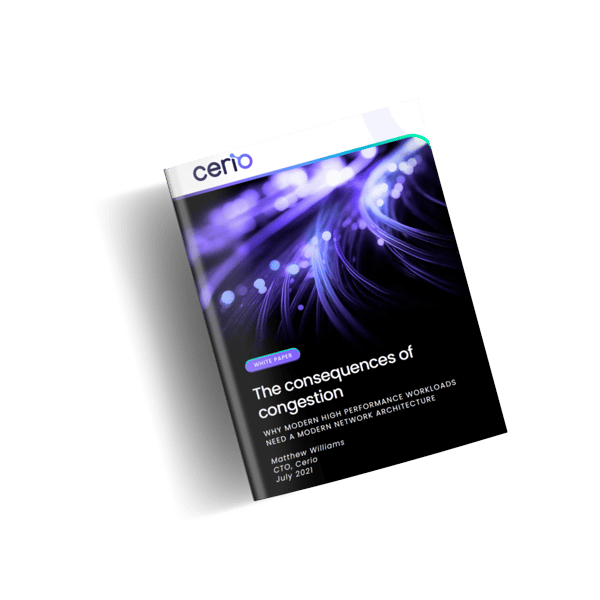Today, every high-performance computing (HPC) workload running globally faces the same crippling issue: Congestion in the network.
WHITEPAPER
It's time to resolve the root cause of congestion
Congestion can delay workload completion times for crucial scientific and enterprise workloads, making HPC systems unpredictable and leaving high-cost cluster resources waiting for delayed data to arrive. Despite various brute-force attempts to resolve the congestion issue, the problem has persisted. Until now.
In this paper, Matthew Williams, CTO at Cerio, explains how recent innovations in networking technologies have led to a new network architecture that targets the root causes of HPC network congestion, specifically:
- Why today's network architectures are not a sustainable approach to HPC workloads
- How HPC workload congestion and latency issues are directly tied to the network architecture
- Why a direct interconnect network architecture minimizes congestion and tail latency

Don't just take our word for it

Cerio makes it possible to extend PCIe beyond the compute node – and the compute rack – to provide configurable, efficient row-scale computing that changes the economics of the data center.

Dr. Ryan Grant
Queen's University
